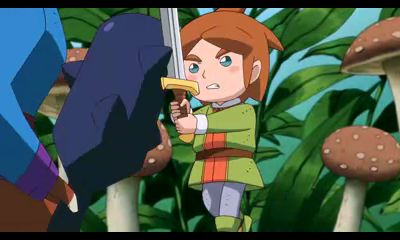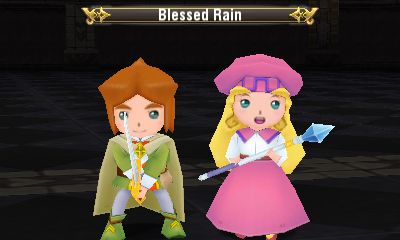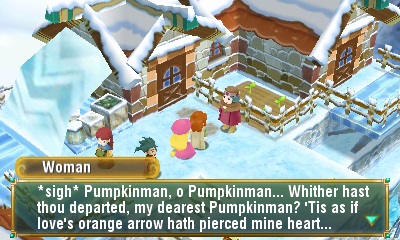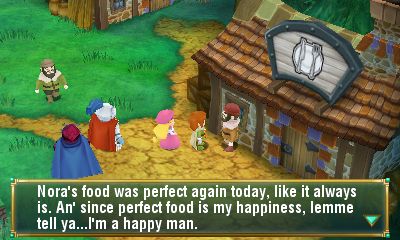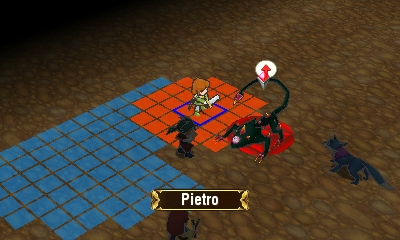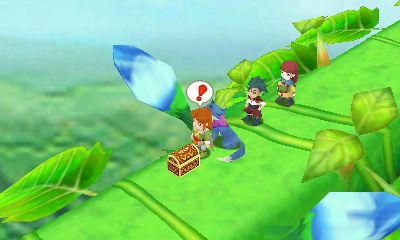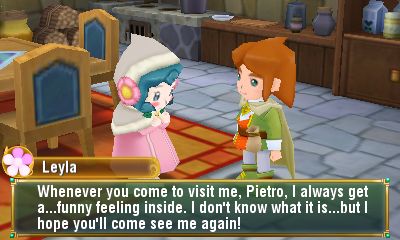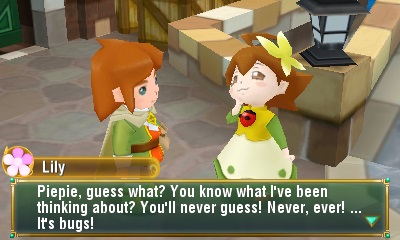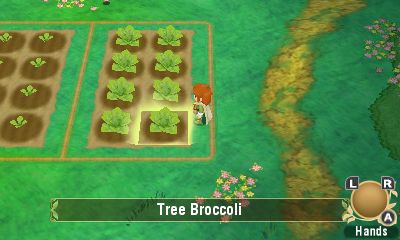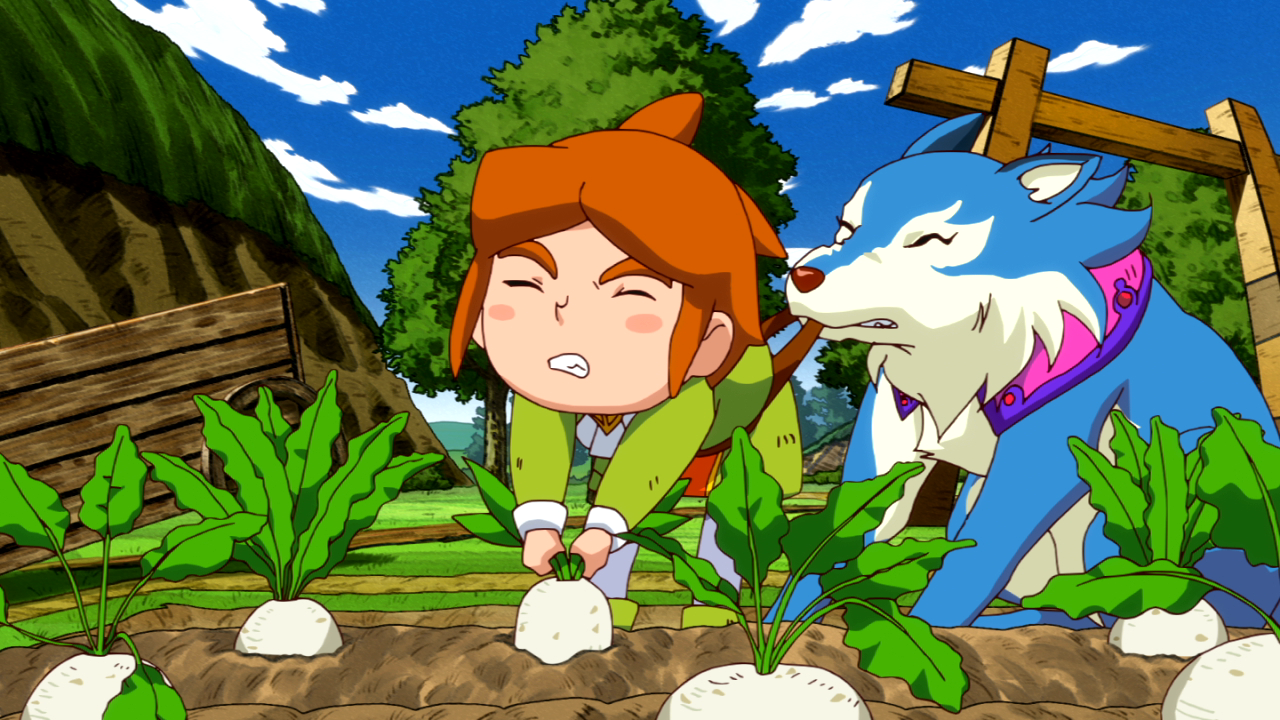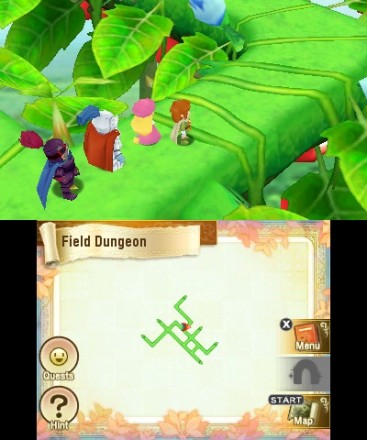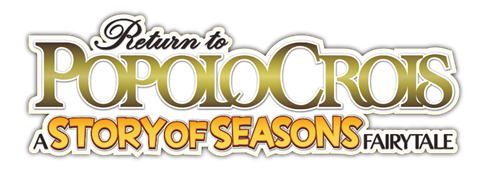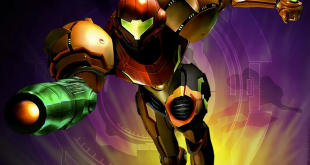Introduction
If you have no idea what PopoloCrois is (and why we’re “returning” to it), you’re forgiven. The first PopoloCrois game (published by Marvelous) was only ever released in North America on PSP in 2005. However, in Japan, it has a much more storied history. A manga series, a novel, and five video games all preceded the series’ debut in America. The series focuses on the Prince of PopoloCrois, Pietro, who is the main playable character in each game.
You probably know what Story of Seasons (Bokujo Monogatari in Japan) is, though. Previously known as Harvest Moon, this farming sim series is insanely popular. In 2014, Marvelous, Inc. decided that Bokujo Monogatari would be handled by their North American division (XSEED Games) instead of Natsume, who had previously been localizing and releasing the games. Natsume kept the Harvest Moon name, though. This caused a split (and more than a bit of confusion amongst gamers), and Natsume released Harvest Moon: The Lost Valley in 2014 while XSEED released (the far superior) Story of Seasons.
What we have here is a cross-over between the Story of Seasons series and the Popolocrois series: Return to PopoloCrois: A Story of Seasons Fairytale. Light farming sim elements from the Seasons series and RPG elements from the PopoloCrois series have come together to create the gaming equivalent of comfort food: a relaxing, smooth-playing game that is made purely for the enjoyment of those who enjoy both the farming sim and JRPG genres.
Story – Worst Birthday Ever
Prince Pietro has turned 13, and everyone in PopoloCrois has come out to celebrate. Unfortunately, though, there is a darkness in PopoloCrois – dark, black, shadow-like creatures have been appearing, and their presence has been corrupting the soil. This is a pretty huge deal, since agriculture is a way of life for the people of PopoloCrois. Among the guests at Pietro’s birthday is a strange woman named Marmela. She comes from a place called Galariland, and the entirety of Galariland has been plagued by these creatures.
Pietro and Marmela agree that the best course of action is for Pietro to come to Galariland and try to help them with their problem. Once in Galariland, though, Pietro finds himself unable to get back to PopoloCrois. Here, your adventure begins – you seek to save Galariland with the help of new friends, and, finally, return to PopoloCrois.
The story is absolutely adorable without being too silly. It also has a few good twists and turns, as well as some dark moments. A good story usually isn’t something that you expect in games like this one, but Return to PopoloCrois delivers one. It’s not going to change your outlook on life or make you question anything serious, but it will make you smile – and that’s refreshing to see in today’s gaming market.
To say too much more would be to spoil things, but those who actually have played previous PopoloCrois games can look forward to seeing old faces as well as new ones. For most players, though, each meeting with a character will be their first.
He is using the best cleaning solution there is.This is okay, though – you don’t have to know anything about the PopoloCrois universe to get into Return to PopoloCrois – the opening cutscene does a fantastic job of covering the basics for you.
Gameplay – Fighting, Farming, and Questing
There are two main elements to Return to PopoloCrois: farming, questing, and battling. We’ll discuss the latter first.
Combat
In the majority of the game’s environments, you’re susceptible to random encounters. When this happens, you’ll be introduced to the simple grid-based combat system that Return to PopoloCrois uses. Each member of your party has a limited range of movement, and each of their attacks and skills has a different range. You’ll move around the grid, using basic attacks, more complex skills, and items to win your battles.
The skill system in Return to PopoloCrois is one of its strongest assets. Not all of your moves will work the same way – abilities have a wide variety of forms. Some affect all of your enemies, and some target just one. Some will hit anything within a cone-shaped range, and others travel along a straight line. These skills in particular require you to plan your moves ahead of time so your character will be in the right place to unleash a devastating attack. As you level up and use your attacks and skills more often, the range of those attacks and skills will increase. This is a really cool element, because you can really feel your characters growing stronger as your progress.
Return to PopoloCrois allows you to adjust your random encounter rate (sort of like Bravely Default) as well as difficulty, so you can play the game the way that’s most comfortable for you. I appreciated that, because I was able to get through particularly interesting side quests without getting attacked by monsters every three seconds, but at other times I was more than encouraged to crank the meter up and grind for levels and money.
Your base stats can be increased by leveling up, and your basic attack strength and your defense can be strengthened further by equipping new gear. This system will feel very familiar to anyone who has ever played an RPG – at each town, the gear gets better and more expensive. As enemies get stronger, the experience you receive also grows – you know, basic RPG stuff. This isn’t a bad thing, though. There’s a reason this progression system works, and Return to PopoloCrois does it very well.
There is also a synthesis system that allows you to blend two items or materials together to create something new. It sounds simple, but it can become a bit complex – and very addicting. This is the way to get the best items in the game, and experimental method by which you obtain your new goodies is thrilling, especially when you have no idea what’s going to be formed by the fusion you’ve chosen.
The battles are generally pretty easy. During my first playthrough, my party was wiped out one time, and it was entirely my fault for wandering into one of the final boss fights before I was ready for it. If you play on “King” difficulty, you’ll feel more of the pressure of standard JRPGs, though it’s still a relatively easy game. On “Seedling” difficulty, you’ll slash through your enemies with hardly any resistance – I think it was included for those who want to focus on farming and story. I spent most of my time on the standard difficulty (“Prince”), which was also pretty easy. King difficulty paired with a low random encounter rate will probably make for the most satisfying experience for RPG veterans.
Quests
The game has a pretty linear main questline, and players could probably run through the main story relatively quickly. However, there are around 100 quests to complete, and after hearing the requests, it’s almost impossible to turn them down. Quests range from simple “find this, kill this” affairs to charming games of hide-and-seek and special farming challenges. These side quests often have excellent rewards, including advanced farming equipment, money, and new items.
I finished the main story in about 20 hours, but that could have been extended if I had done more side quests. I finished the last main quest with a full side quest list, but it’s okay – you can keep playing even after the main story has ended, which is great news for completionists. In fact, I’ve put in an extra five hours post-game just because I enjoy the game so much. The point is, while the story is relatively short for a JRPG, it can be extended far beyond 20 hours by its many side quests (not to mention the farming, bug catching, and material gathering elements).
I keep getting asked about the romance system in Return to PopoloCrois – after all, the Story of Seasons series puts a heavy emphasis on romance. It’s not really comparable, though. You see, in the PopoloCrois series, Pietro has a crush on a young witch named Narcia. At first, I found this annoying as someone who had never played a PopoloCrois game before. However, as the story unfolded, I began to grow more attached to their relationship and more understanding of their deep bond (this really hits home towards the end, with one of the story’s best twists).
So, instead of finding a romantic partner, Pietro works on strengthening his “friendship” with girls across Galariland. Your friendship level is represented by how many petals are lit up on the flower to the left of the girl’s name (as seen above). The game will give you an alert whenever one of the girls is “missing you,” and that’s your cue to go give them a present. Each girl has likes and dislikes, and once you give them enough things that they like, your friendship level will go up.
If you fill up the entire flower, you’ll earn their heart. Which is an actual item that gets added to your inventory. Strange, but cute. It’s kind of annoying that you’re encouraged to lead these girls on even though there’s no possible way to actually have a relationship with any of them, but hey – they’re kids and it’s a video game. Whether it’s messed up or not, it’s pretty fun. The girls have cute, quirky personalities, and talking with them is a lot of fun.
Farming
Return to PopoloCrois is first and foremost a JRPG – there’s no doubt about that. However, the farming element is very strong, and it adds a lot to the game. You start out working with a small, abandoned farm. As you explore Galariland, you’ll unlock more areas to farm. You can also upgrade your main farm throughout the game, and even during the post-game. The main story has a lot to do with the soil of Galariland, and you’ll have to go to great lengths to purify it – including shrinking yourself down and jumping into various gardens. As you purify areas of the world, you’ll gain access to temples that hold special farms at their centers. Once you defeat the boss inside, you’ll have access to that farm and all the resources it has to offer.
You can’t just grow crops anywhere you want, though – specific crops are meant to be planted on certain farms. This gives an actual purpose to having multiple farms that are in different areas of the world (don’t worry – you’ll unlock fast travel pretty early on), and it gives you a reason to manage the space on each farm. To farm, you’ll have to use a hoe to prepare the land, plant a seed, and then water the seed – just like most Story of Seasons games. What makes this different, though, is that your plants won’t die if you go questing and leave them alone for a few days. The stress of ruining your farm is taken away, and what remains is just the fun part. For hardcore farming-sim fans, this might be a turn-off, but it’s a good way to ease yourself into the genre (or to just take a break from the monotony of most farming sims).
Different areas also contain different bugs and minerals, which are important to item synthesis and general collection. You’re rewarded for all of this work through certificates that come to your mailbox. After farming a certain amount of crops, defeating a certain amount of enemies, catching a certain amount of bugs, or finishing a romance sidequest, you’ll get a certificate with a useful item attached. It’s fun, and it makes sure that a feeling of progress is present in every aspect of the game.
Of course, crops aren’t the only things that’ll live on your farms – you’ll also be raising animals. Cuckottes (Chickens), Sumoos (Cows), and Pacapacas (Alpaca-like creatures) are all possible residents of your farms. You’ll have to progress to certain points in the story to unlock them, but once you do you can adopt animals and keep them as pets. Cuckottes will give you eggs, Sumoos will give you milk, and Pacapacas will give you fur. You can check on your animals daily and even give them treats to make them happier. You don’t have to do the hard work of cleaning out the barn, though (like in Story of Seasons). The only thing you have to do is keep the animals well-fed, happy, and then come back to get the resources they provide.
Unlike Story of Seasons and Rune Factory, you can sell crops and items immediately in Return to PopoloCrois. You still use a shipment box, but your shipment can be made immediately. The instant payment is nice, since you don’t have to go to sleep to make money. You will have to let real time pass for your crops to grow, though. You’ll also have to water them a few times. Don’t worry, though – it’s not too long, and nothing ever slows down the smooth pace of the game.
Audio & Visuals – An Adorable Adventure
The characters of Return to PopoloCrois are presented in adorable chibi style, and it works perfectly alongside the game’s story and general mood. Even the larger characters like the strong White Knight and the evil Gami Gami Devil look like plushies I’d absolutely love to have in my living room.
You can choose whether or not to show the thick black lines that outline the characters. I think it adds a cartoonish charm to the game, so I kept them on. I think most players will do the same thing, but it’s nice to see such a small feature be changeable. The overworld has a great design – the mountains around Mathieu Village differ greatly from the harbor town of Eodor Village, the forests near Lamplight Village, and the cave-based Zuzul Village. There’s also the more urban Cordan, and the technology-obsessed Galaris.
The only places where things start to look the same are the dungeons. The field dungeons (where you’ll go to purify soil) all look incredibly similar, and their endless twists and turns get annoying after a few hours of dungeon crawling. In general, though, it’s a good-looking game. Return to PopoloCrois doesn’t go out of its way to be eye candy, but it would be weird if it looked any other way than the way it does.
The music, on the other hand, is fantastic. Yoshiyuki Sahashi has crafted a unique soundtrack that blends electronic-style tracks with more traditional fantasy music. It’s a lot of fun to experience the way that the score changes as you move from area to area. There’s really no better way to understand the excellence of the music than to listen to it yourself, so definitely play this one with headphones on if you can.
The voice acting is good but inconsistent. I’m still not sure how the developers decided which lines were spoken all the way through, which lines were accompanied by just a small exclamation or sigh, and which lines had no speech at all. That having been said, the voice acting is really well done. You can choose between three tracks – two Japanese voice tracks and one English voice track. I played with the second Japanese track the most, since I liked it the most (and I recommend it over the others), but none of them are particularly bad. The English felt the most strange to me, but that’s probably just because I’m used to playing this type of game with Japanese voice acting.
This is another example of how many choices this game gives you – three voice acting tracks, an adjustable encounter rate, three difficulty levels, and the ability to turn trace outlines on and off are all given to the player. You can change any of these things at any point in your adventure, and that amount of customization is absolutely fantastic, and might ease the sting that the lack of character customization might cause in the hearts of those who haven’t spent much time with older RPGs.
Replay Value
There’s almost too much to do in Return to PopoloCrois. There’s a ticker that comes down from the top of the upper screen once in a while that lets you know what’s going on in other areas of the game, and it reminds you of how much is happening at once. You might be doing a side quest for a resident of Zuzul Village when you get a slew of notifications – one or more of your farms has produce to pick! Your Sumoos are ready to be milked! One of your friends misses you! Your plants are thirsty! And the list goes on. It would be overwhelming if it weren’t for the game’s forgiving nature – you’re free to do things at your own pace without being afraid of harming your farm, which is one of the major things that sets Return to PopoloCrois apart from Rune Factory and Story of Seasons.
Once you finish the main story, you’re still going to have things to do. Whether you do them or not is up to you, but I found it impossible not to dive right back into the game. I wanted to keep farming, collecting, and helping the people of Galariland. Though I’ve written my review and I have other games to be playing, I keep coming back to Return to PopoloCrois because I just enjoy being in its world. I see myself coming back to this game quite often throughout the foreseeable future.
Conclusion
Return to PopoloCrois isn’t groundbreaking. It doesn’t bring a lot of new elements to the JRPG and farming sim genres. Instead, it uses mechanics that we already know and love from the games that made us love these genres in the first place (Final Fantasy Tactics and the original Harvest Moon come to mind). The JRPG elements aren’t as strong as they are in Rune Factory, and the farming isn’t as complicated as it is in Story of Seasons – instead, Return to PopoloCrois breaks things down to their most simple (and most enjoyable) forms. It might be a more easy-going experience than you’re used to, but I give it an extremely high recommendation – Return to PopoloCrois belongs in your 3DS library.
Review copy provided by XSEED Games
Gameplay - 8
Story - 7.5
Audio - 8
Visuals - 7.5
Replay Value - 9
8
GREAT
Return to PopoloCrois is comfort gaming at its finest - it's pure bliss for big fans of JRPGs and farming sim games, but will put a smile on almost any gamer's face.
 Load the Game Video Games, Reviews, Game News, Game Reviews & Game Video Trailers
Load the Game Video Games, Reviews, Game News, Game Reviews & Game Video Trailers
